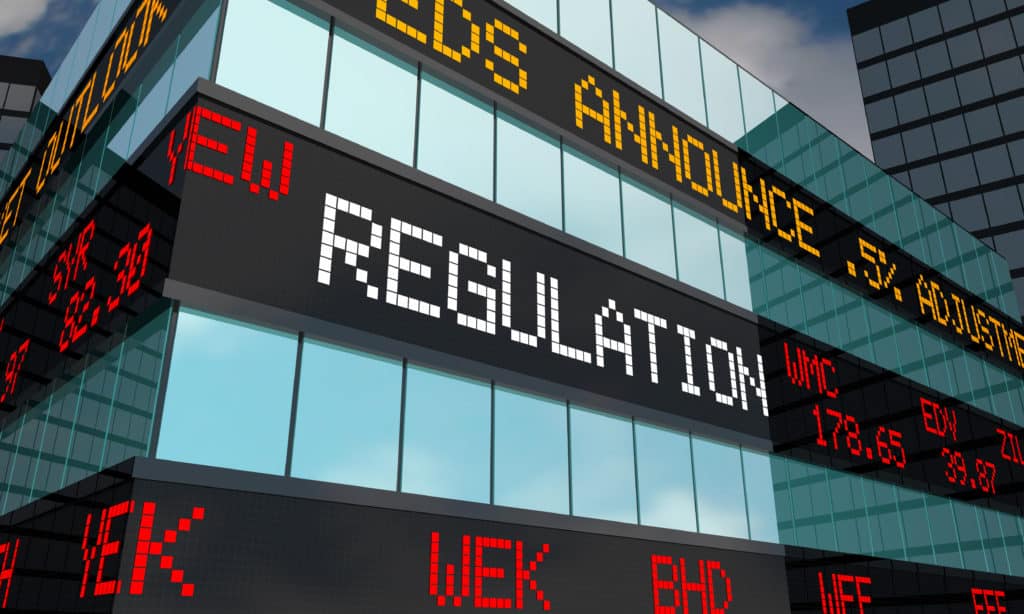MFA Supports SEC Revisiting Cap on Private Fund Investments
May 20, 2025
MFA President and CEO Bryan Corbett issued the following statement in response to Securities and Exchange Commission Chairman Paul Atkins’ announcement that the Commission will reevaluate the longstanding staff position that limits closed-end funds from investing more than 15% of their assets in private funds:
“Individual investors have been shut out from private markets for too long. Reevaluating the arbitrary limits on how much closed-end funds can invest in private funds will give everyday Americans more opportunities to save for retirement, build wealth, and diversify their portfolios. We look forward to working with Chairman Atkins on ways to responsibly expand access to private funds.” — MFA President and CEO, Bryan Corbett
Source: MFA
Paul S. Atkins, Chairman
Washington D.C.
May 19, 2025
Thank you, Cicely, for your kind introduction. Ladies and gentlemen, I am very happy to be with you at my first SEC Speaks conference as SEC Chairman, though I have been a regular at this event over the past 15 years or so.[1]
The event has experienced some rather precipitous fits and starts over the past couple of years, and I shall make sure that it stays on track as valuable, comprehensive public outreach by the agency.
I extend my thanks to the folks at the Practising Law Institute for organizing the conference. I would also like to thank:
- The SEC staff who have the annual opportunity to talk a little bit publicly about their work over the past year and discuss some of the things that they expect to come in the next few months,
- The commentators taking part on the various panels who can pose questions and make observations that can help to focus the discussion on critical topics and perspectives that might not be top of mind to those of us within the halls of the SEC,
- You here live in the audience where you have a chance to meet each other and talk to panelists, and
- You viewing online who have a convenient opportunity to participate virtually.
Today I intend to discuss innovation. In particular, about how the Securities and Exchange Commission should not fear innovation. Rather, it should embrace and champion it.
Markets, by their nature, evolve. They are dynamic because they are made up of human beings. When human beings encounter problems, they innovate to solve them because there is a demand — and there are rewards — for solutions. In a free society, human nature rises to the occasion with inventiveness and competitive spirit, plus Adam Smith’s invisible hand to provide incentives beyond mere altruism. All of that is a good thing.
Over the decades, including during my time as a Commissioner from 2002 to 2008 and before that on the staff of two SEC chairmen, the SEC has both enabled innovation and, unfortunately at times, stifled it. Fortunately, innovation — in other words, progress — eventually won the day. Let me take a few moments to revisit some recent history.
In the late 1960s, there was a big, beautiful bull market. Trading volume doubled to some 12 million shares a day — which I realize sounds quaint today — overwhelming the paper-based clearance and settlement systems and transfer agent duties. Efficiency began to deteriorate as rising stacks of paper stock certificates had to be physically delivered by clerks trundling carts carrying boxes of those paper certificates to and from various broker-dealers up and down Wall Street and in other financial districts all across America. Investors paid the price for this inefficiency as securities were misplaced, misdirected, lost, or delivered late. Fails ballooned and many inadequately capitalized broker-dealers were caught by that whiplash of scuttled transactions. As a Band-Aid, trading times each day were reduced and exchanges eventually closed on Wednesdays to allow firms time to process the mountains of certificates. At times, the New York Stock Exchange closed two days in a week to catch up on the paperwork.
The breakdown over an antiquated system became known as the “Paperwork Crisis.”
As William Dentzer, the first CEO of the Depository Trust Company, or DTC, put it: “The paperwork crisis caused the post-trade processing of hundreds of millions of dollars to be delayed or to fail entirely, dividends to investors to be misdirected, and brokerage firms to go bust.”[2]
Very much to its credit, the SEC at the time was proactive. It was clear that what needed to be done was to move to electronic transactions and book-entry. But how would we get there? The agency constructively held roundtables and engaged with industry. It used its rulemaking authority and powers of persuasion to allow for new ways of back-office processing of trades and other efficiencies tied to information technology. As a result of that collaboration between the SEC and market participants, the DTC was eventually established as an industry co-operative, later becoming the Depository Trust & Clearing Corporation. The computerization of securities was born with the SEC very much at the forefront of advancing that effort.
As things go, that late 1960s bull market was inevitably followed by a severe, long-lived bear market. Many broker-dealers went out of business because of the crushing downturn in revenues, rather than inadequate back-office capacity as in the preceding bull market. The SEC worked with Congress and the securities industry to enact the Securities Investor Protection Act in 1970. That law established the Securities Investor Protection Corporation, an industry-backed insurance fund to protect investors from losses in the event their broker fails. It was a positive innovation for investors in which the SEC played a significant role.
In the late 1980s and early 1990s, the American Stock Exchange and other organizations had come up with a creative response to the SEC’s identification of program trading of index stocks as a contributor to the 1987 market break. They proposed an instrument for trading a basket of stocks — “SPIDERS” — the S&P Depository Receipts, which is a basket of equities traded as a fund. It was the earliest exchange-traded fund, or ETF. But, the proposal languished at the Commission for several years, as the Divisions at the time raised various issues with this new fund. In no uncertain terms, Chairman Richard Breeden demanded that the Division heads “figure it out”[3] and gave them a limited amount of time to do so. He was emphatic about getting it done right away. And the SEC did. The SPDR launched in 1993. Some at the SEC were worried whether the market would accept this innovation. In fact, it took some effort by the sponsoring firms to persuade institutions to purchase the product. But, it grew to $1 billion in three years. Chairman Breeden’s view was, let the market decide; we cannot be the arbiter. I think we can all agree that the innovation of SPDRs and ETFs has been a boon for investors.
During Arthur Levitt’s tenure as chairman in the mid-to-late 1990s, proprietary trading systems took off in popularity, controversially drawing trading off-exchange. Chairman Levitt believed that the SEC needed to provide regulatory flexibility for the electronic markets to be able to innovate. So, Regulation Alternative Trading Systems, or “Reg ATS,” adopted in 1999, allowed for ATSs to be regulated like broker-dealers, rather than exchanges.
As we moved to a new century, the market came up with another innovation: the gold fund, the first commodity ETF. This concept had been internally bouncing around the Divisions like a pinball and across town to the Commodity Futures Trading Commission. Although it took a while, innovation prevailed, and investors gained the option to invest in gold without physically owning it.
This brings me to today. The crypto markets have been languishing in SEC limbo for years.
Initially, the SEC first pursued what I call the “head-in-the-sand” approach — perhaps hoping that crypto would go away. Then, it pivoted and pursued a shoot-first-and-ask-questions-later approach of regulation through enforcement. The “just come in to visit” entreaty often meant coming home to a subpoena. It seemed like a catch-22 for market participants. This environment did not create trust. In reality, the message was, “You go figure it out.” That is a fine approach if the regulator plays an active role in interacting with the marketplace to encourage solutions and adapt existing rules and practices if the existing approaches are inapposite to new developments in technology. Old ways of doing things should not be immutable, especially if Congress has granted an agency discretion to make changes consistent with Congressional intent and in the public interest. While the SEC must be faithful to its statutes in any effort to be innovative, it should use its available authority and discretion to adapt to and accommodate new developments.
The SEC’s claim at the time that it was willing to talk to prospective registrants proved ephemeral at best because the SEC made no adaptations to registration forms or other regulatory requirements to accommodate this new technology. I have been told that market participants would in good faith enter what they thought were policy meetings with Commission staff only to receive enforcement inquiries shortly after their meeting. If that culture were not bad enough, SEC leadership for too long prevented staff from communicating with market participants when complicated legal questions arose. I am pleased to announce that I recently directed Division of Corporation Finance staff to maintain transparent interactions with the public. When staff is allowed to talk openly with industry, market participants can move more nimbly and allocate capital to productive uses.
It is a new day at the SEC. While I have directed Commission staff across our policy Divisions to begin drafting rule proposals related to crypto, the staff continue to “clear the brush” through staff-level statements. For example, last week the staff of the Division of Trading and Markets issued a set of FAQs that addressed broker-dealer and transfer agent questions. While the views of the staff are not rules or regulations of the Commission, they can provide useful insights for the public.[4] Ultimately, the Commission is, of course, responsible and must itself squarely address these issues to ensure that the public has clear rules of the road.
Last, as I mentioned at a recent Crypto Task Force roundtable, I would like the Commission to allow SEC registrants to custody and trade both securities and non-securities under one roof. Enabling this reality could reduce costs for investors while allowing non-security trading to enter a regulated environment at the federal level expeditiously. This would be an initial step towards the possibility of eventually achieving a “super-app” reality. Thank you to Commissioner Hester Peirce, the Crypto Task Force, and Trading and Markets staff for their continued efforts.
In keeping with this theme of innovation and the progress of the Crypto Task Force, we have asked Congress for reprogramming approval to integrate the functions of the agency’s Strategic Hub for Innovation and Financial Technology, or “FinHub” into other parts of the agency.
Established in 2018, FinHub was created during a critical period of emerging technologies. The rapid development of distributed ledger technology, including digital assets, artificial intelligence, and machine learning, required a centralized effort to build understanding at the SEC. Unfortunately, FinHub over time came to be perceived by many in the digital asset industry as a tool for enforcement rather than a tool to foster innovation. Moreover, as currently constituted, FinHub is too small to be viable and efficient, and this staff expertise can be better utilized elsewhere in the agency.
The principles and priorities under which FinHub was founded are being integrated into the very fabric of the SEC. I will ensure that innovation will be ingrained in the culture SEC-wide, as it should be, and not focused on one small office.
Financial innovation sometimes means getting out of the way of capital formation and allowing all investors to gain the benefits of our robust markets.
Since 2002, the SEC staff has taken the position that closed-end funds investing 15% or more of their assets in private funds should impose a minimum initial investment requirement of $25,000 and restrict sales to investors that satisfy the accredited investor standard. As a result, many retail investors have missed out on opportunities to invest in closed-end funds that invest in private investment funds, like hedge funds and private equity funds.
Much has changed since 2002 — including the growth of private markets and the increased oversight and enhanced reporting by both private fund advisers and registered funds. Indeed, in the last 10 years alone, private fund assets have almost tripled from $11.6 trillion to $30.9 trillion.[5] Allowing this option could increase investment opportunities for retail investors seeking to diversify their investment allocation in line with their investment time horizon and risk tolerance.
With this in mind, I intend to have the Commission address this situation and reconsider this 23-year-old practice concerning investments by closed-end funds in private funds. This common-sense approach will give all investors the ability to seek exposure to a growing and important asset class, while still providing the investor protections afforded to registered funds. We must consider and resolve important disclosure issues for these products, particularly for those that trade on exchanges, including conflicts of interest, illiquidity, and fees.
Before I close, I want to mention a topic that has drawn significant scrutiny, the Consolidated Audit Trail, known by the innocuous-sounding nickname “CAT.” This particular “CAT” has quite an appetite for data and computer power, with costs rising to nearly $250 million a year. These costs are divvied up and eventually, one way or another, fall on the shoulders of investors. The financial services industry and Congress have rightly pushed back on the seemingly endless cost increases and the risks of storing so much sensitive data together. Much of the increases are due to changing demands for information and access.
Therefore, I have instructed the staff to undertake a comprehensive review of the CAT. In addition to examining the costs of the system, I would like to see the staff take a hard look at the reporting requirements and scope of what is collected. I look forward to the agency engaging with the public on this important issue.
As I begin my tenure as Chairman, I can tell you that we are getting back to our roots of promoting, rather than stifling, innovation. The markets innovate, and the SEC should not be in the business of telling them to stand still.
It is a new day at the SEC, and I look forward to what we are going to be able to accomplish for investors and the markets.
Thank you.
Source: SEC
Search
RECENT PRESS RELEASES
Related Post





